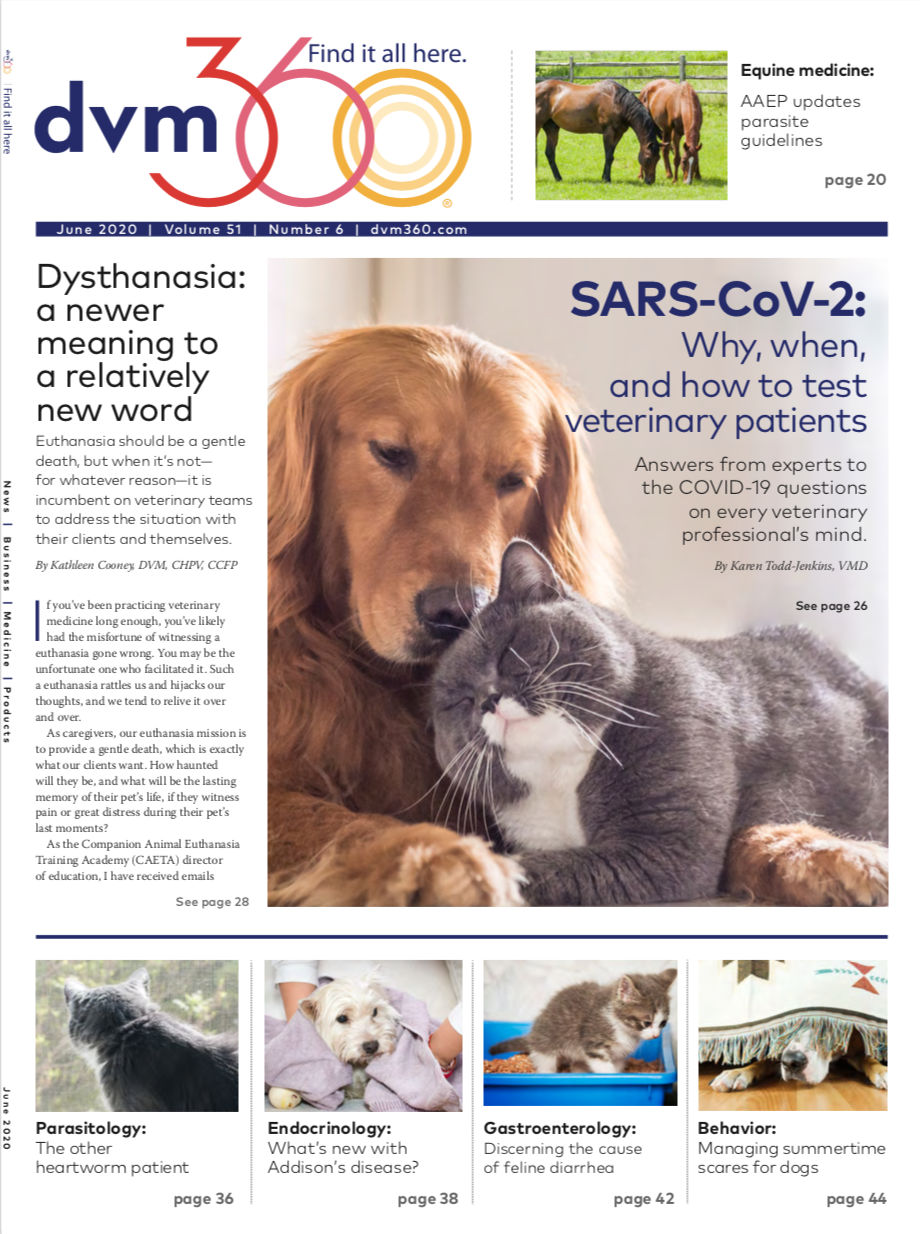Final words on the ‘whitest profession’
There may be disagreement about the reasons why relatively few minorities join the veterinary profession, but we all agree that increasing diversity and inclusion should be a priority.
freshidea / stock.adobe.com

Editor’s note: The following letters are part of an ongoing conversation about diversity and inclusion in veterinary medicine that started when dvm360 published this article late last year. For the beginning of the conversation, the original letters can be found here and here.
I would like to make one final comment and response about recent letters to the editor regarding “the whitest profession in America.” I believe Dr. McKenzie’s assertion that the makeup of our profession is predominantly white as a result of “systemic racism” is incorrect. (“More on the ‘whitest profession,’” April 2020). It is obvious from his website that Dr. McKenzie is a firm believer in evidence-based medicine. In this discussion, the evidence and statistics from the American Association of Veterinary Medical Colleges (AAVMC) do not support his assertion.
According to the AAVMC, the percentage of underrepresented minorities applying to veterinary colleges in 2016 was 21.6%, and the actual enrollment in those same programs was almost identical (21.1%). I’m not a statistician, but this leads me to conclude, perhaps naively, that the makeup of the veterinary student population and of our profession as a whole mirrors the racial makeup of the applicant pool. (The same holds true for the percentage of women now enrolled in U.S. and Canadian veterinary programs. Most classes are 80% female, reflecting the 82% of female applicants in the 2016 AAVMC report.)
Despite many initiatives, including by my alma mater, Purdue University, the number of underrepresented minorities applying to veterinary colleges is still way below that of white applicants, and there is no evidence to support that the admissions to veterinary schools are or have been the result of intentional discrimination or “systemic racism.”
The good news is that the percentage of minorities graduating in 2016 was 15.8%—substantially higher than the approximately 4.5% when I graduated from Purdue's DVM program in 1982, with most of the gains being made since the launch of the Diversity Matters initiative in 2005.
In 1969, one of my early mentors who allowed me to “job shadow” was an African-American graduate of Tuskegee University. He was instrumental in my decision to become a veterinarian. During my 38-year career, I have never known (nor can I imagine) a colleague who was unwilling to encourage or mentor elementary, high school or college students of any minority group that showed interest in our profession.
My concern is that using the terminology “the whitest profession in America” will in fact dissuade underrepresented minorities from seeking to join our profession by insinuating that the deck is stacked against them before they even attempt to shadow a veterinarian or pursue an education that will prepare them for admission to colleges of veterinary medicine. In this regard, I believe “words matter.”
Likewise, should I be expected to dissuade my white, “privileged” grandsons from seeking a career in veterinary medicine, as we must now and for the foreseeable future balance the racial makeup of the profession? Should similar programs developed to attract underrepresented minorities to veterinary medicine be made available to them?
I thank Dr. McKenzie for his feedback. I was very hesitant to get involved in discussions about race, but once again, I must disagree about using the term “whitest profession in America.” I believe it does nothing to enhance the promotion of diversity in our profession.
—Dr. Paul Clemente
Fort Wayne, Indiana
_______________________________________________________________________________________________
I appreciate Dr. Clemente’s willingness to engage in a discussion of such a contentious topic, and I acknowledge the difficulty in having substantive conversations about such a complex issue in the letters page of a magazine. However, I feel obliged to point out that his understanding of my comments, and of the role of racism in the demographic makeup of the veterinary profession, is incorrect.
That the proportion of veterinarians from underrepresented groups (at least those that are tracked) is similar to the proportion of applicants from those groups to veterinary colleges suggests that intentional discrimination in admissions is not the reason for the disproportionate predominance of white veterinarians. This is encouraging, both because such a direct manifestation of racism would reflect badly on the profession and because it would be a clear violation of federal law.
This does not demonstrate, however, that systematic racism is not at work or that the poor representation of specific groups is due to a natural or inherent lack of interest among those groups in joining the profession. The composition of the applicant pool reflects a much more insidious and widespread constellation of factors that impede potential applicants from underrepresented communities at a much earlier stage on the path to becoming veterinarians. This includes disparities in educational opportunities and resources as well as a paucity of mentors and role models in the profession to encourage children in minority communities to consider veterinary medicine as a career. This lack of representation in our profession, not the acknowledgment of it in the phrase “whitest profession in America,” is one of the barriers to greater diversity. Sadly, the deck is stacked against people of color, and solving the problem begins with clearly and honestly labeling it.
The suggestion that diversity and inclusion is a zero sum game in which white men must be discriminated against to make room for others is an outdated and disappointingly simplistic characterization of the problem and the available solutions. Dr. Clemente’s grandsons are indeed privileged that their ethnicity is not an obstacle to their career aspirations, as it still too often is for people of color. They should be encouraged to pursue their ambitions and, with a grandfather who is a veterinarian, they can likely see themselves as part of a profession that looks comfortable and familiar. The grandchildren of people of color should have the same opportunities and encouragement as Dr. Clemente provides his grandsons, and right now they frequently do not. Inclusion means making such encouragement and opportunities available to everyone, not discriminating against one group to favor another.
I would encourage Dr. Clemente, and everyone interested in inclusion and diversity in veterinary medicine, to read Navigating Diversity and Inclusion in Veterinary Medicine, edited by Lisa M. Greenhill and colleagues. This excellent, evidence-based resource traces the roots of the problem and offers strategies for improvement.
—Brennen McKenzie, MA, MSc, VMD
The SkeptVet
